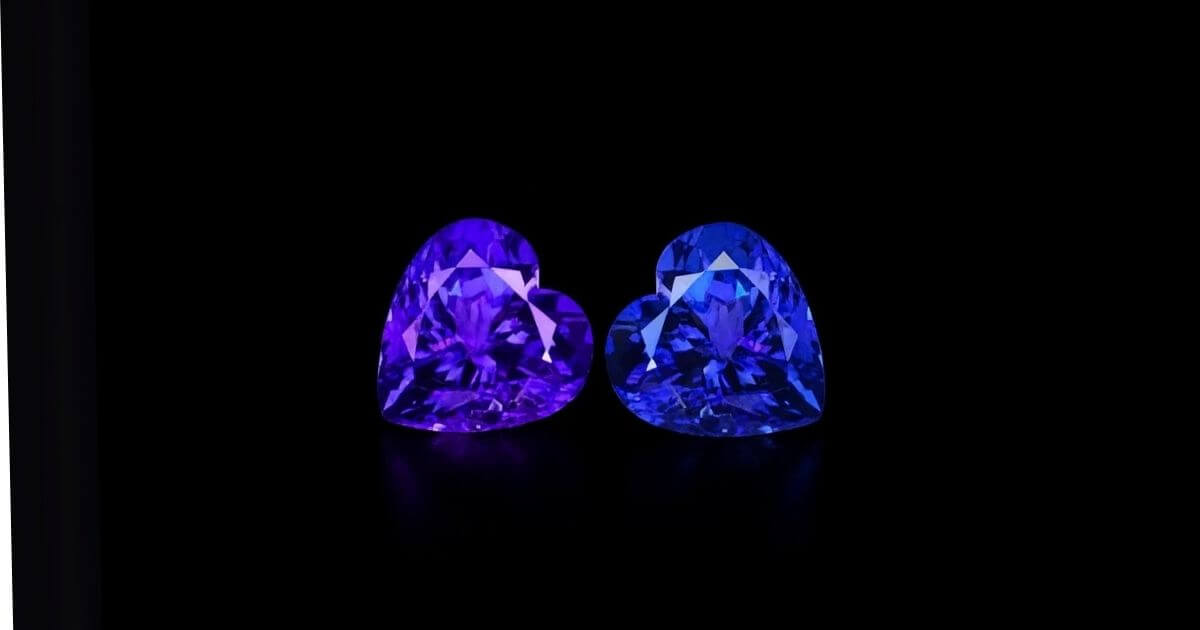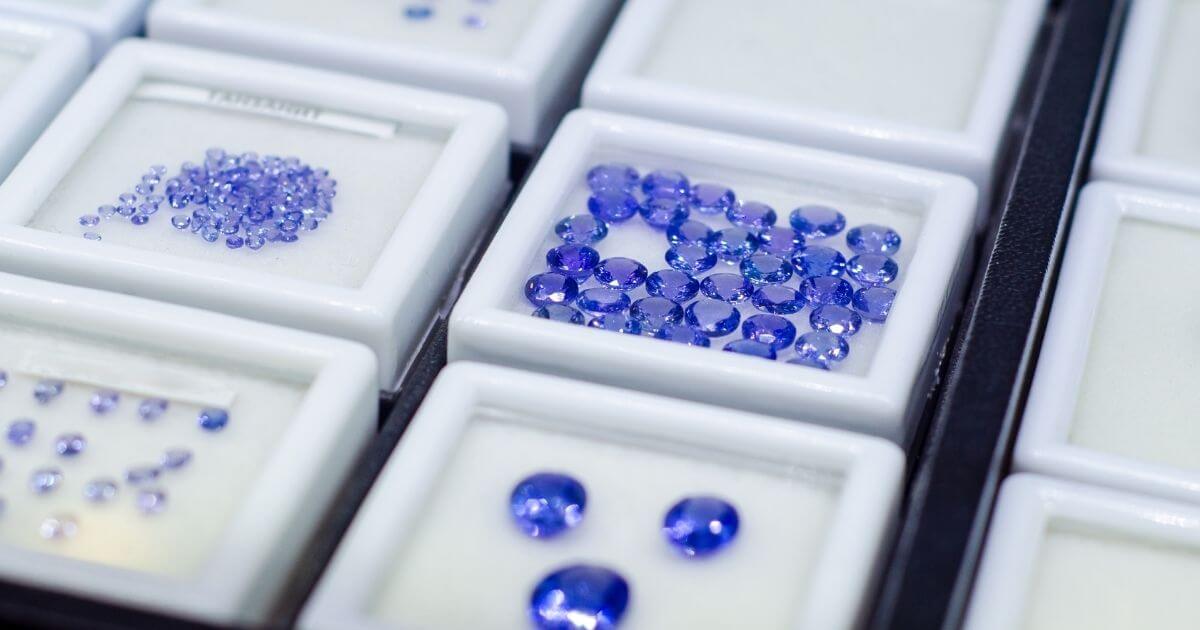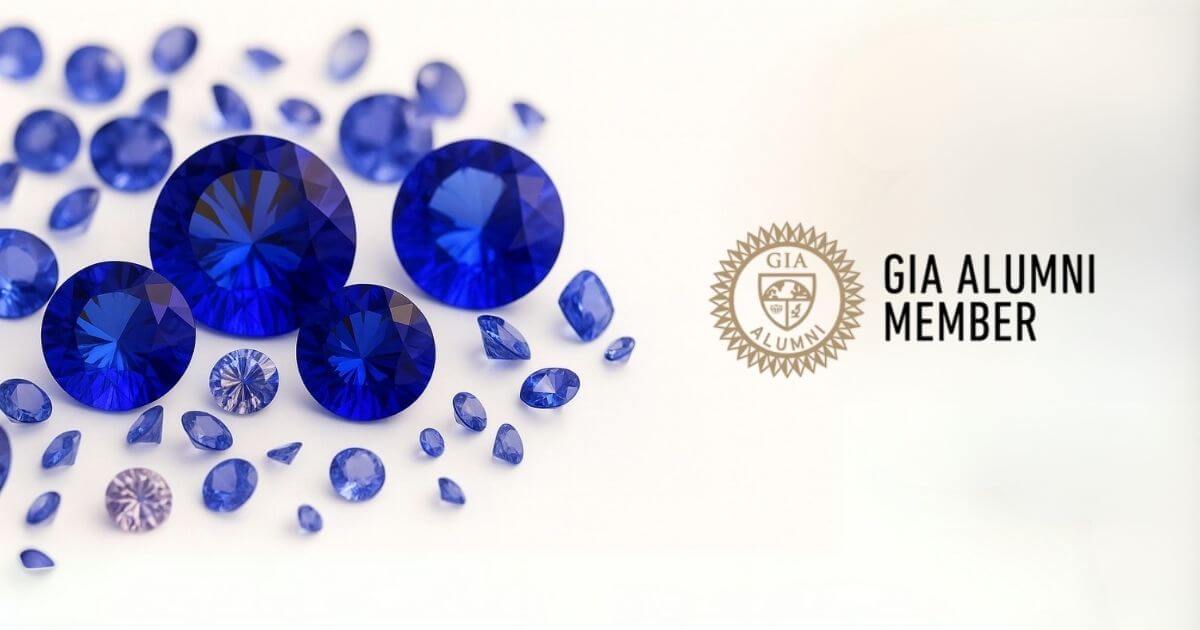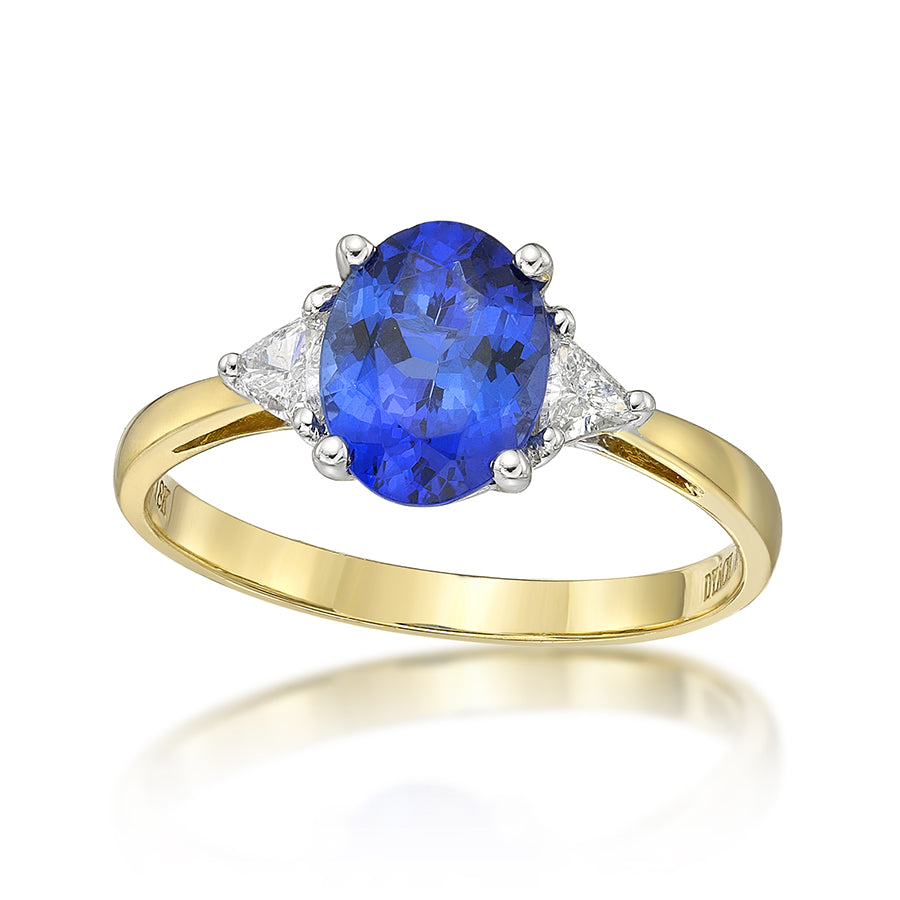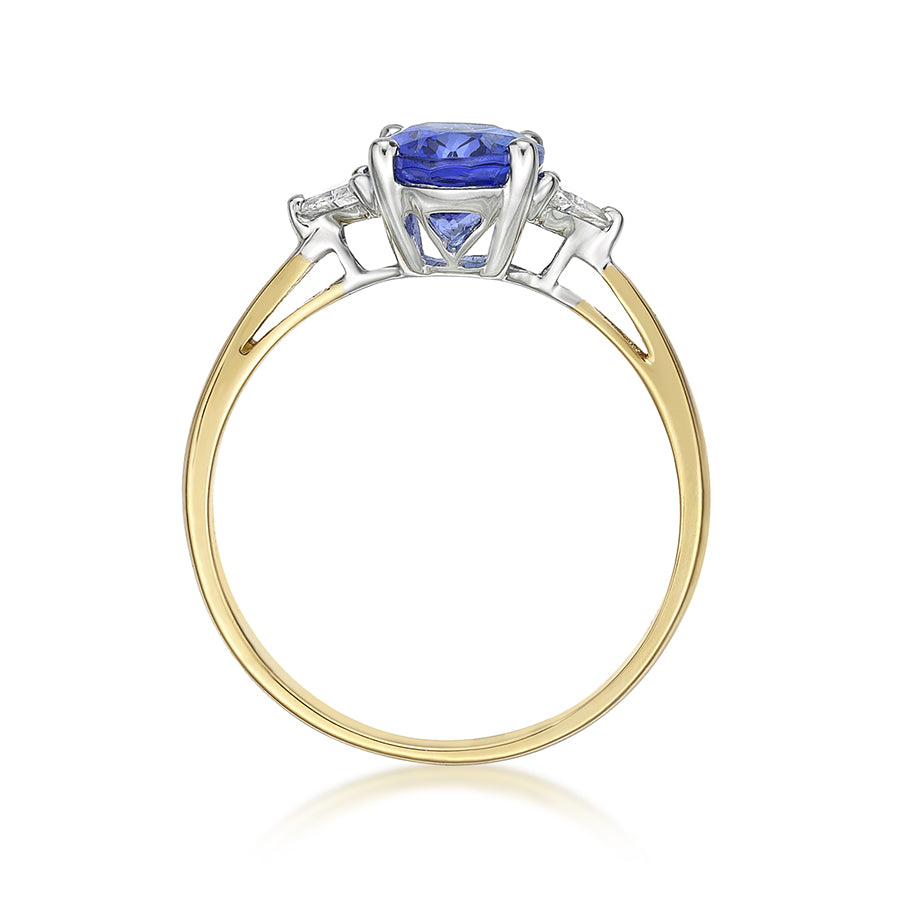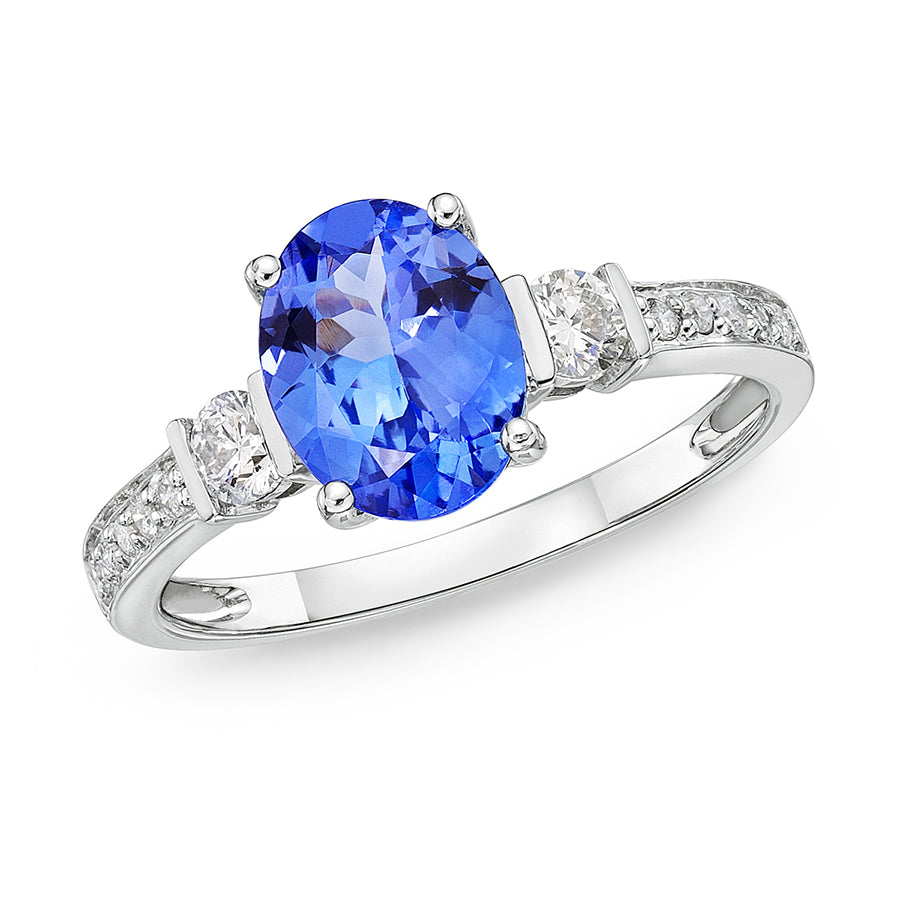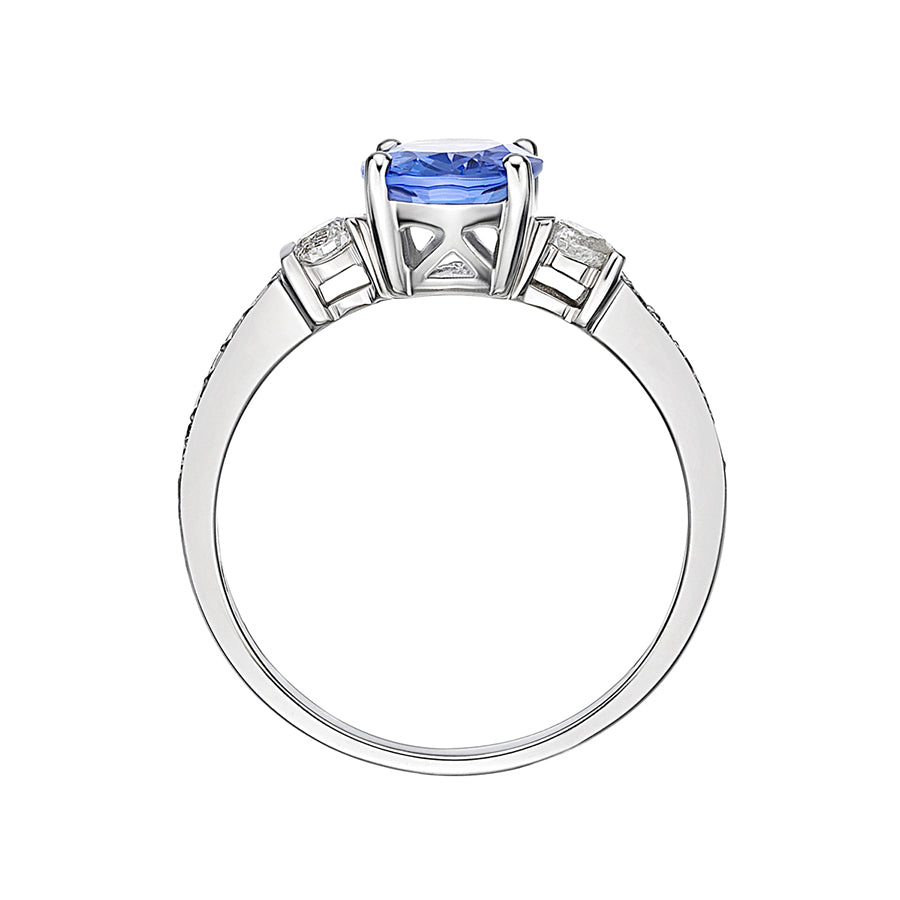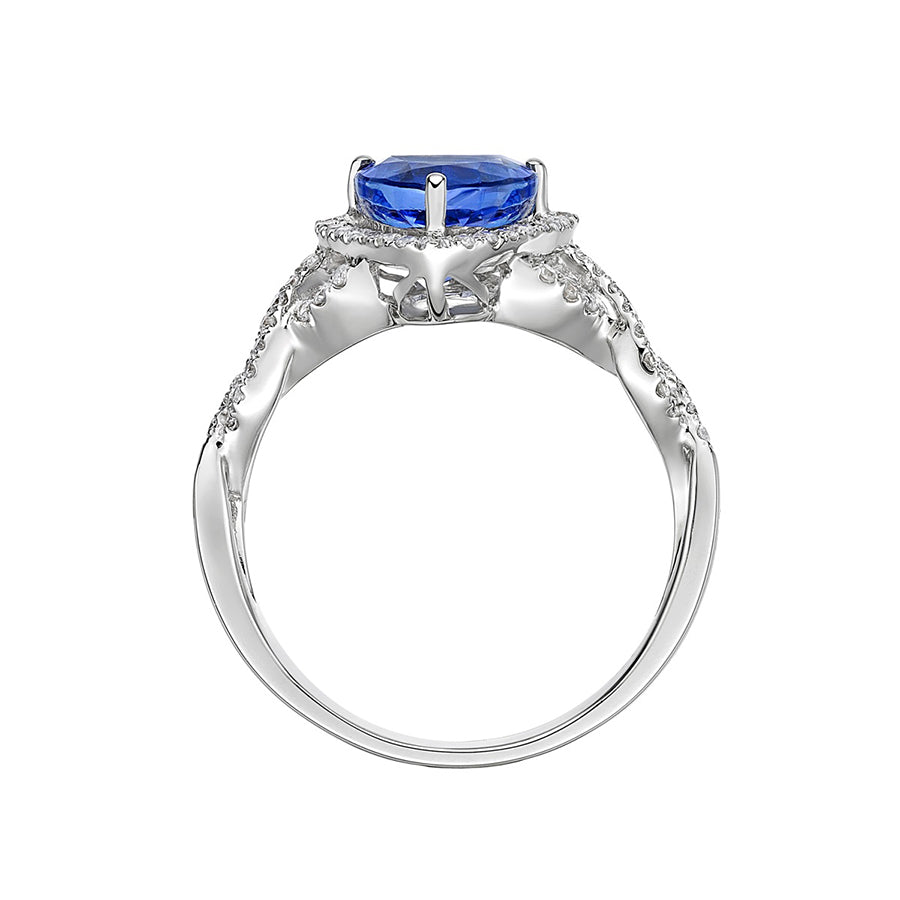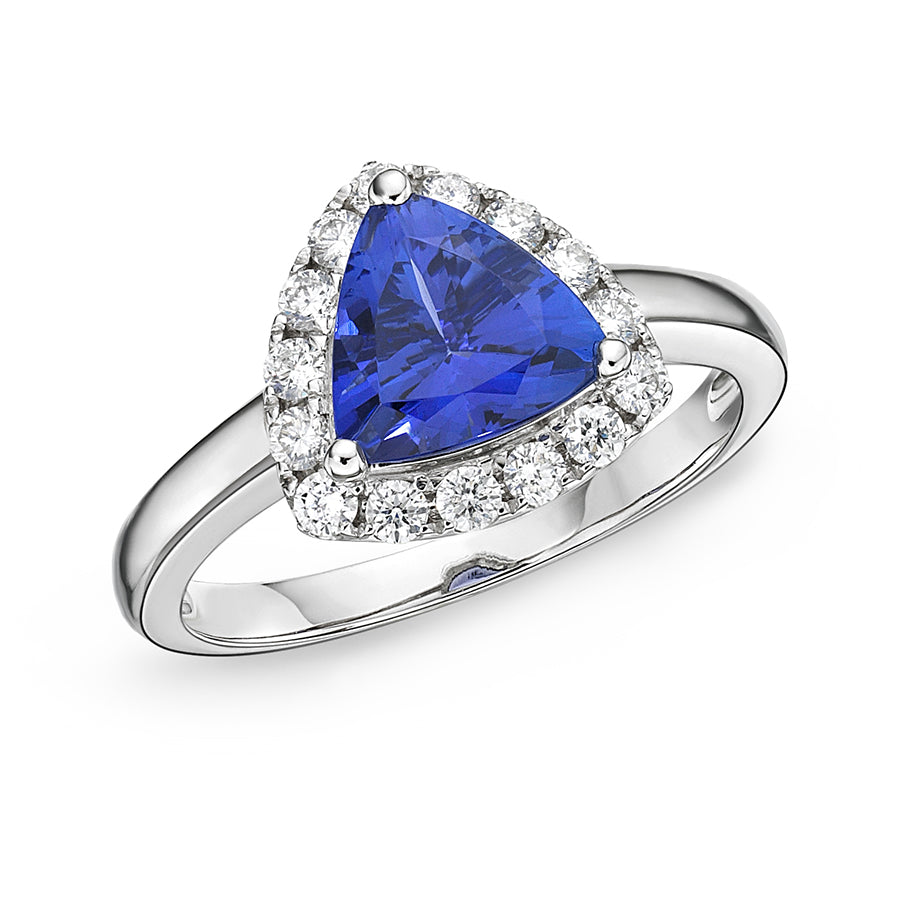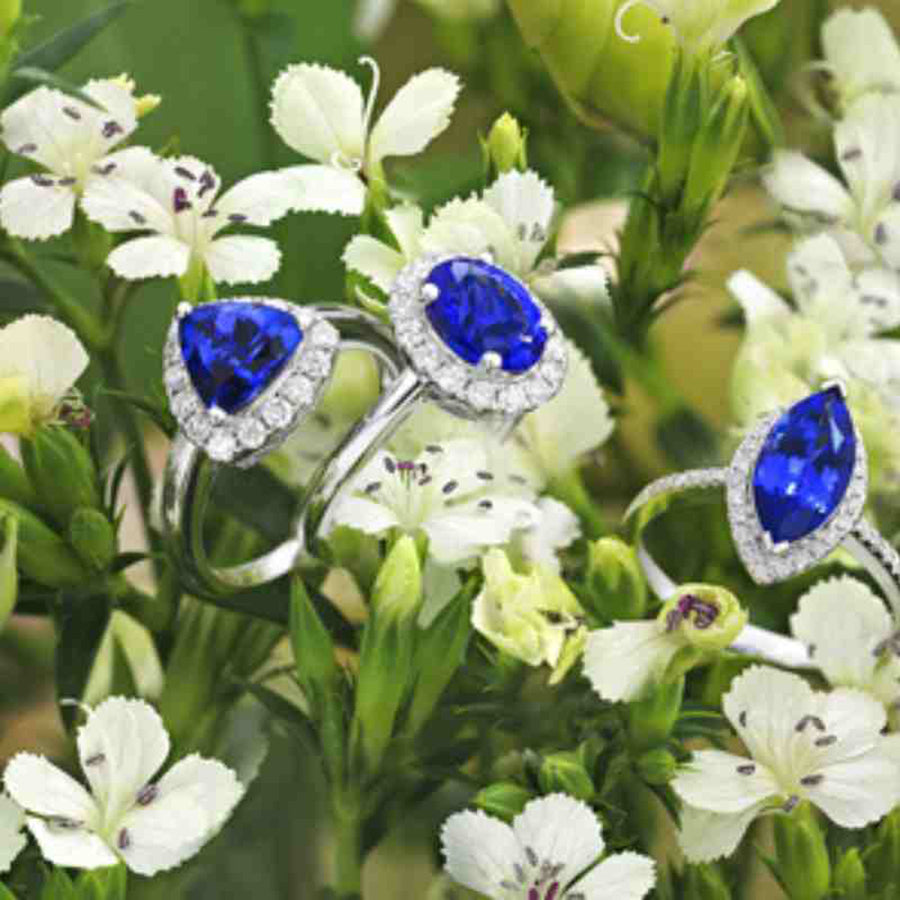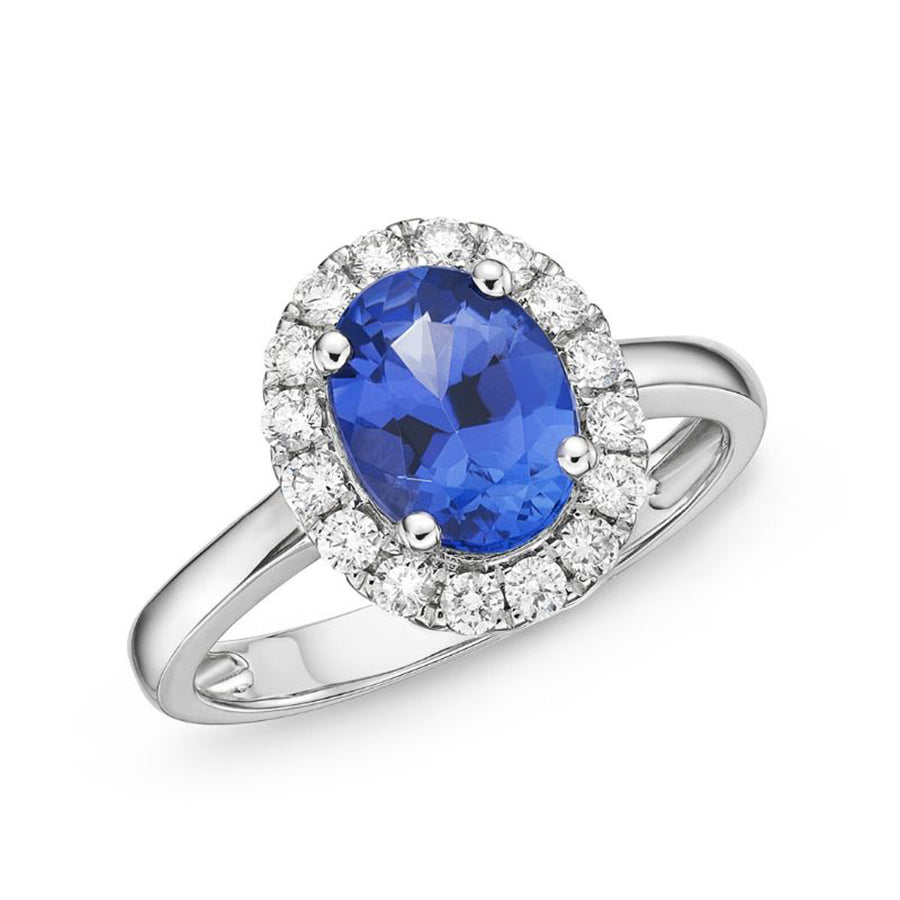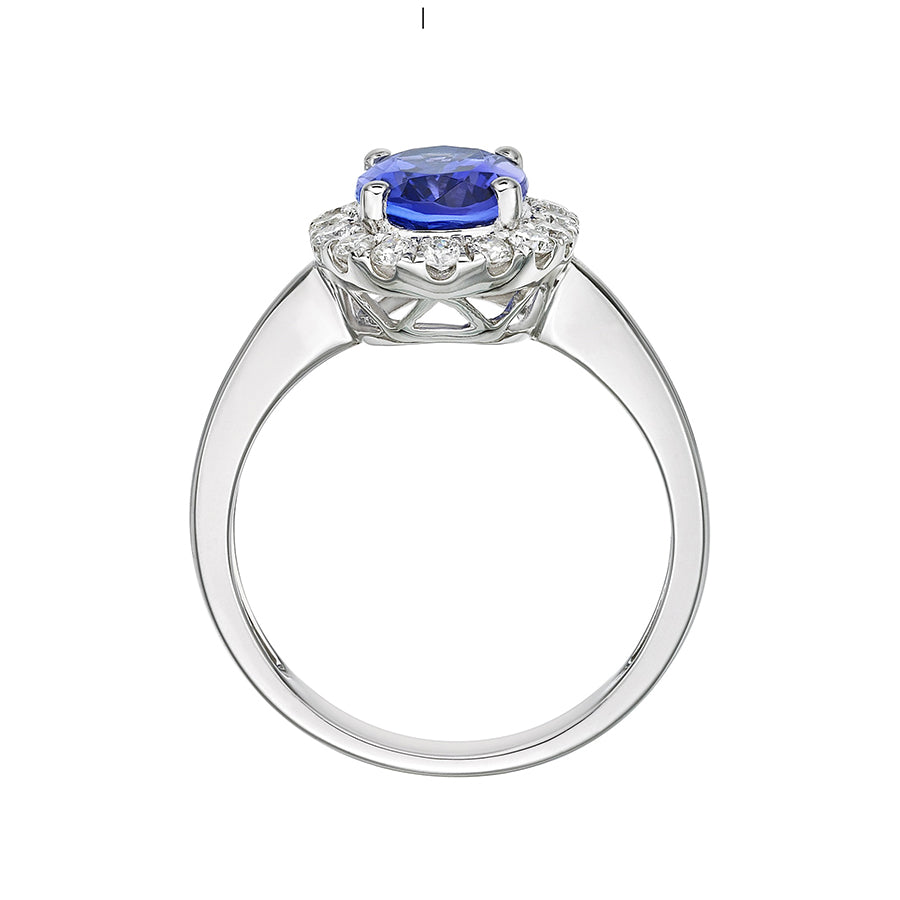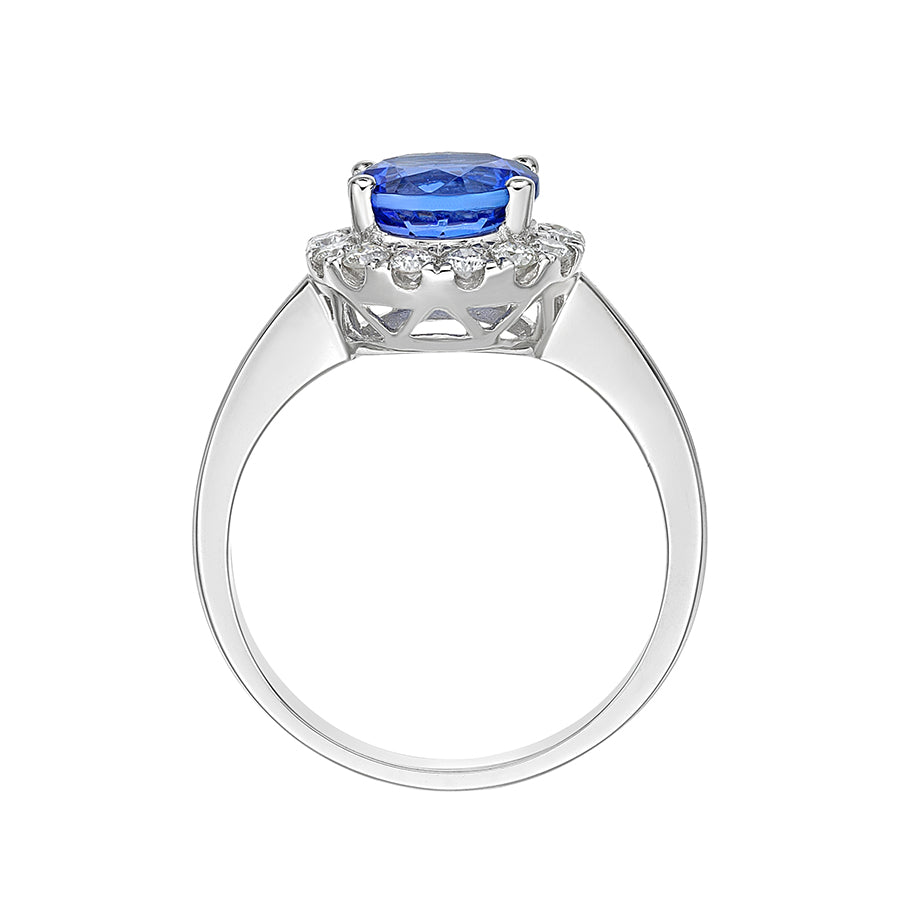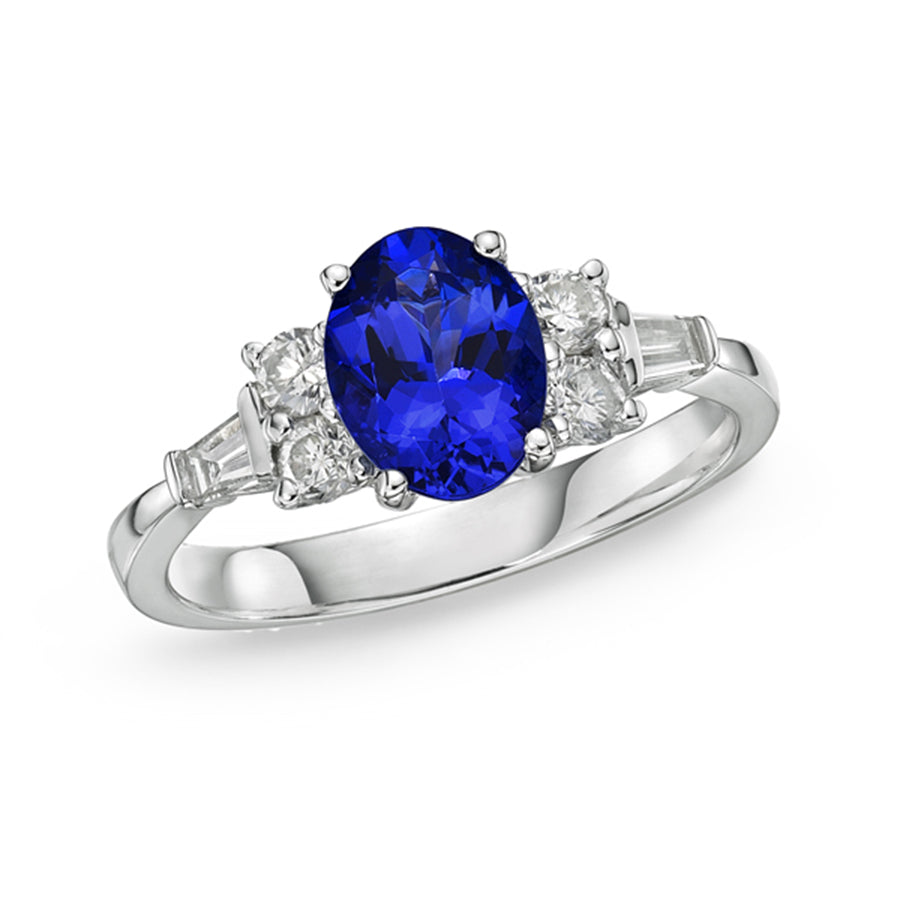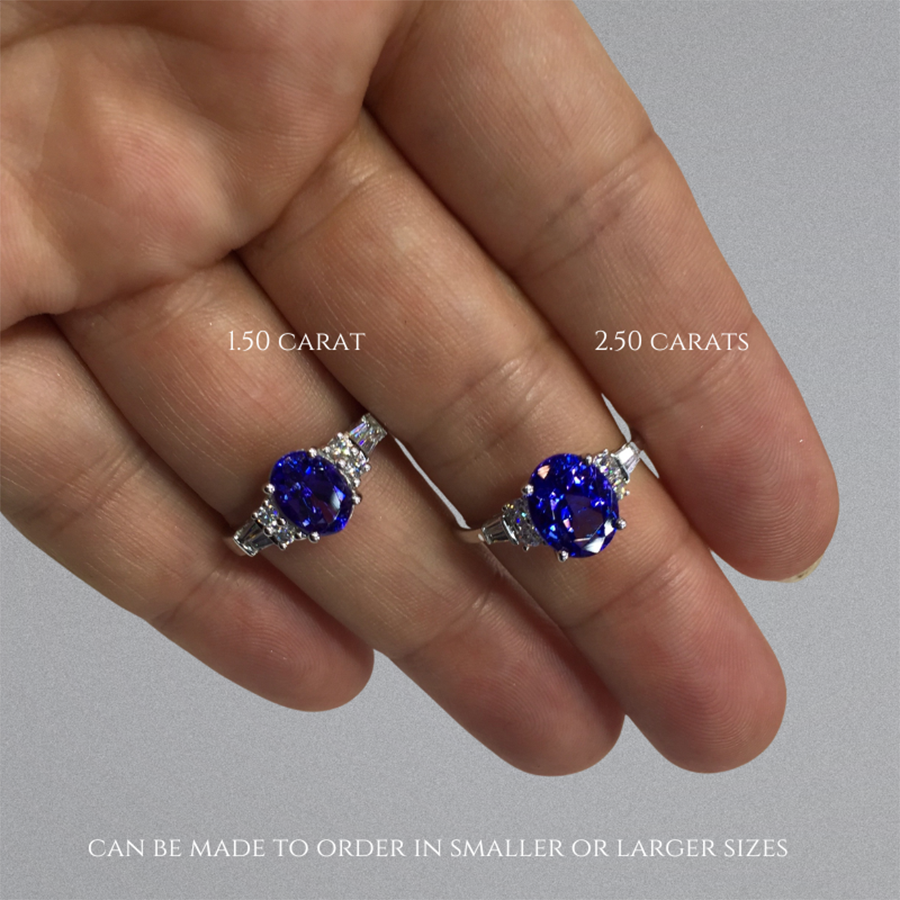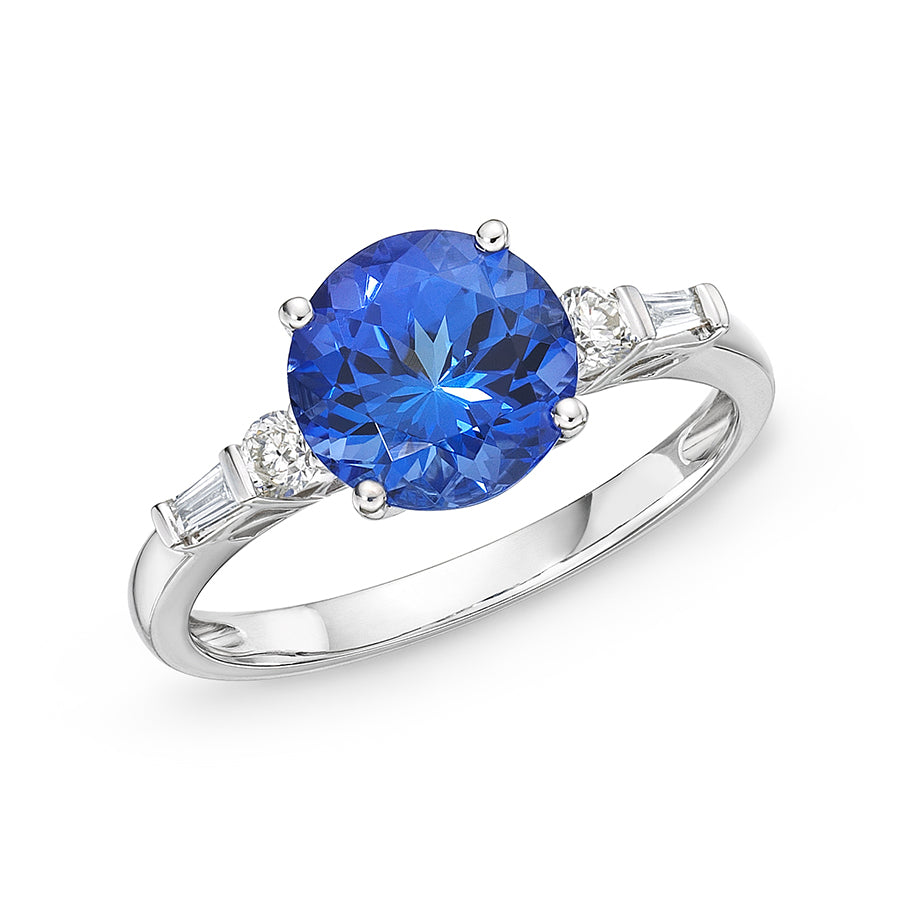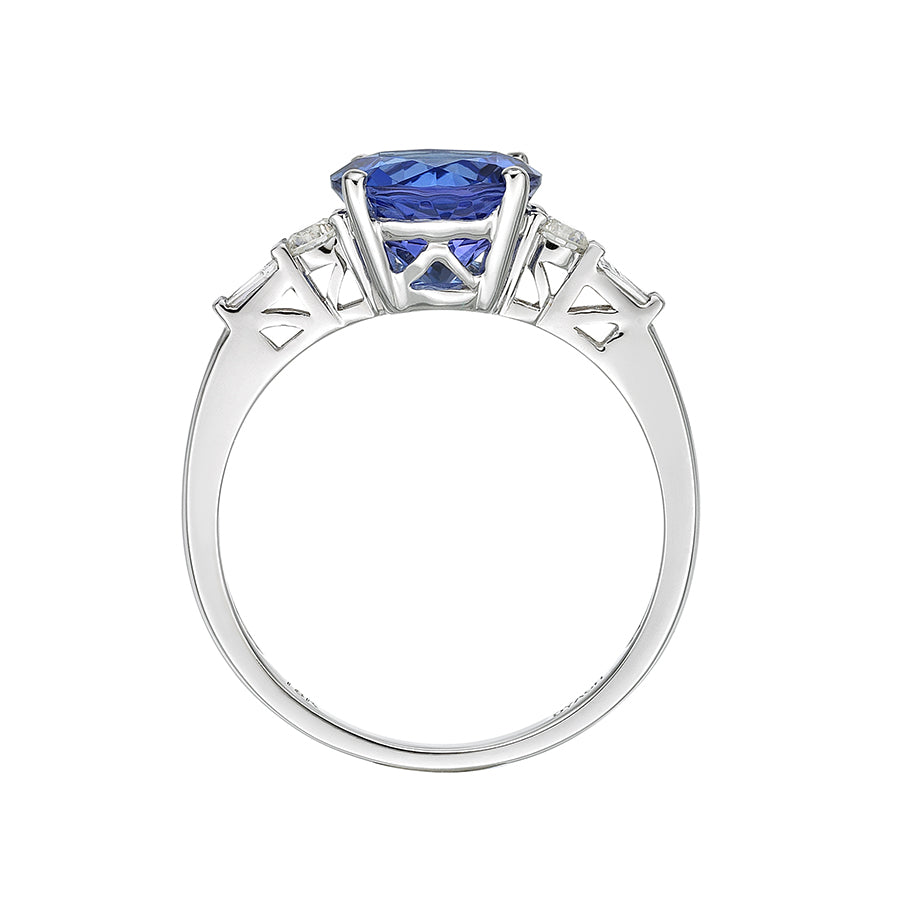How the GIA Colored Stone Grading System Works
The GIA grading system evaluates gem color based on three components:
- Hue: This reflects the basic colors we perceive. When discussing a gem’s “color,” most people refer to its hue.
- Tone: This indicates a gem’s relative lightness or darkness on a scale from 2 to 8.
- Saturation: This describes the hue’s intensity on a scale from 1 to 6.
For instance, a tanzanite graded as “vB 6/6” means:
- Hue: Violetish-Blue (vB) – Blue dominant, violet secondary
- Tone: 6 – Medium Dark
- Saturation: 6 – Vivid


HUE - BLUE OR VIOLET DOMINANT ?
In gemological reports, gemologists use abbreviations, capitalizing the primary color while using lowercase for secondary colors. For example, “vB” stands for violetish blue, and “bV” indicates bluish violet.

Important Facts
It’s important to note that the GIA does not issue Gemological Reports stating a tanzanite’s color grade. They simply state if the stone is blue or violet dominant.
Lighting Matters
Tanzanite is graded under ONLY white light. Your stone WILL change color under different lighting conditions – and some stones can be very “moody” or exhibit very different colors in different lights. Yellow light makes your stone more violet , and white light more blue.

Buyer beware! If you're looking for (or have been promised) an intensely saturated blue tanzanite weighing less than 2.50 carats with a vb 6/6, you may be in for a disappointment. A fine, 1.00-carat tanzanite is likely to be at most a medium blue, or GIA 5/5. Be cautious of online retailers selling smaller stones (between 0.50 and 2.50 carats) as “investment grade” or GIA 6/6!
